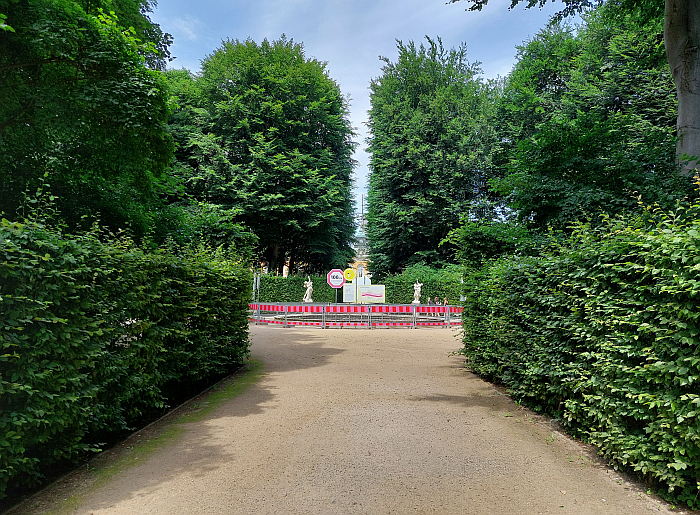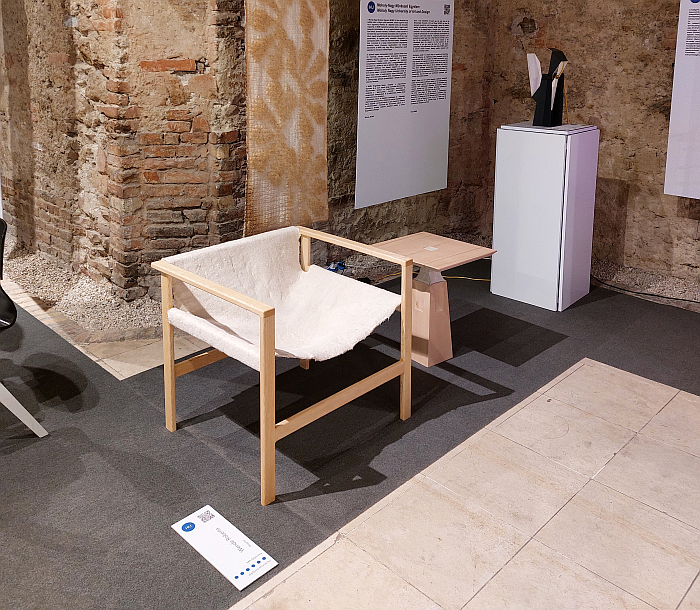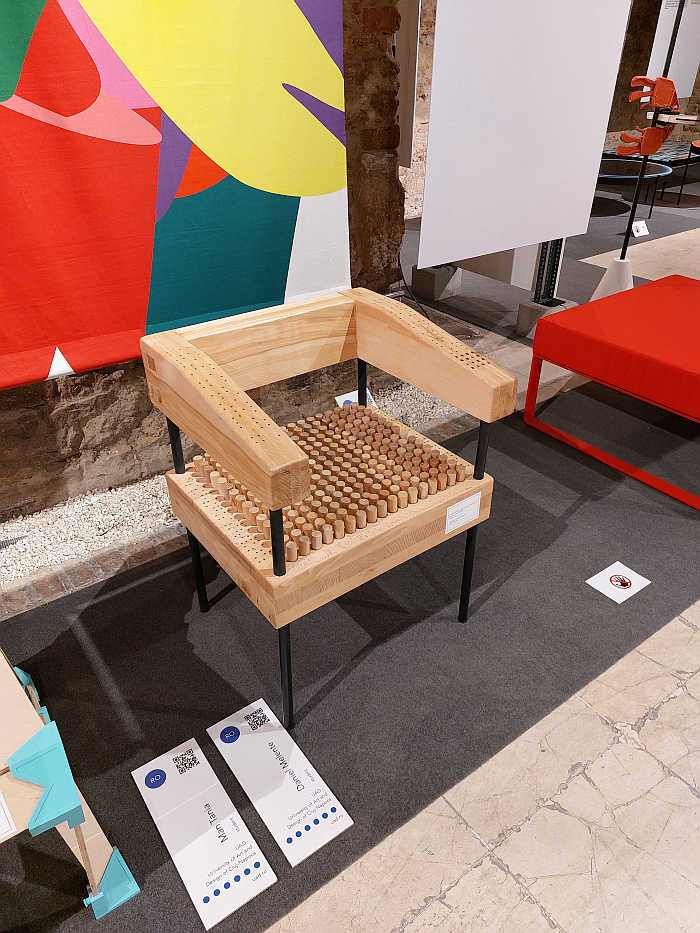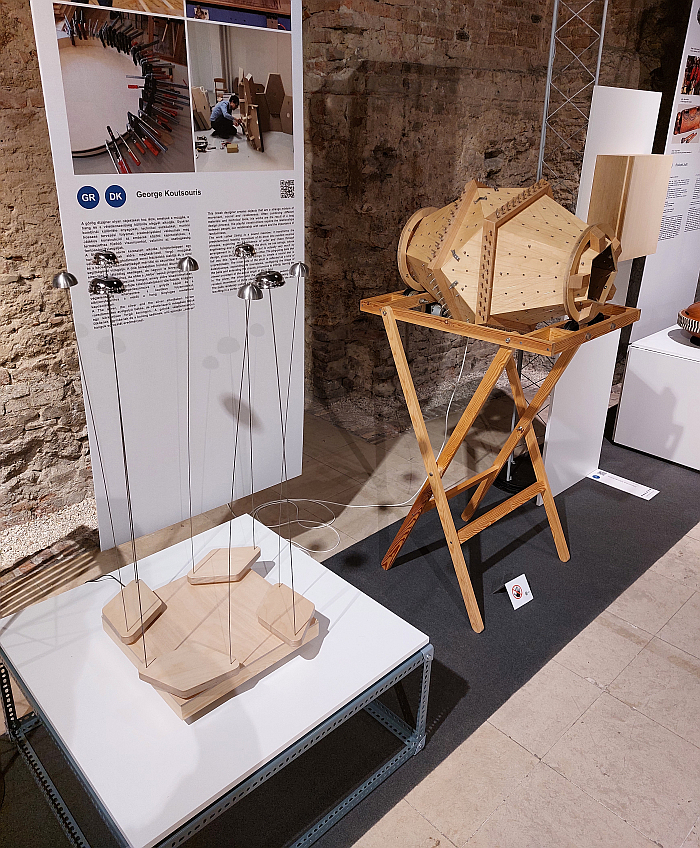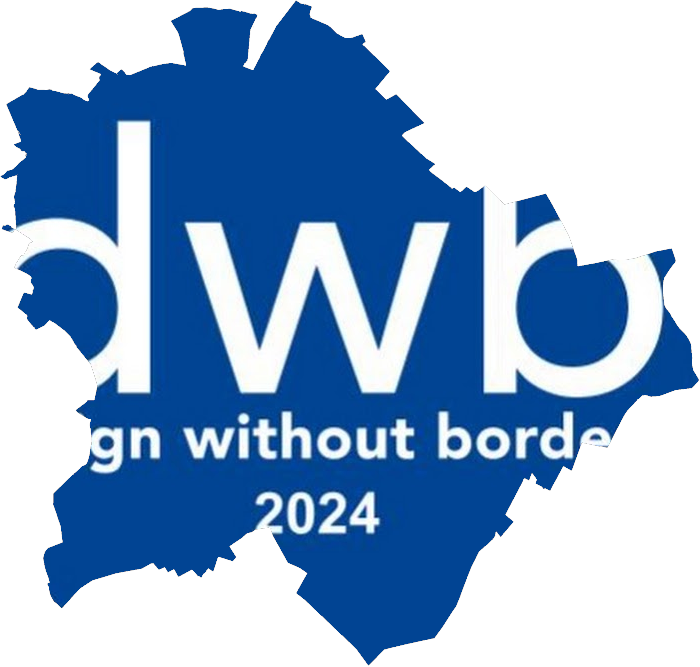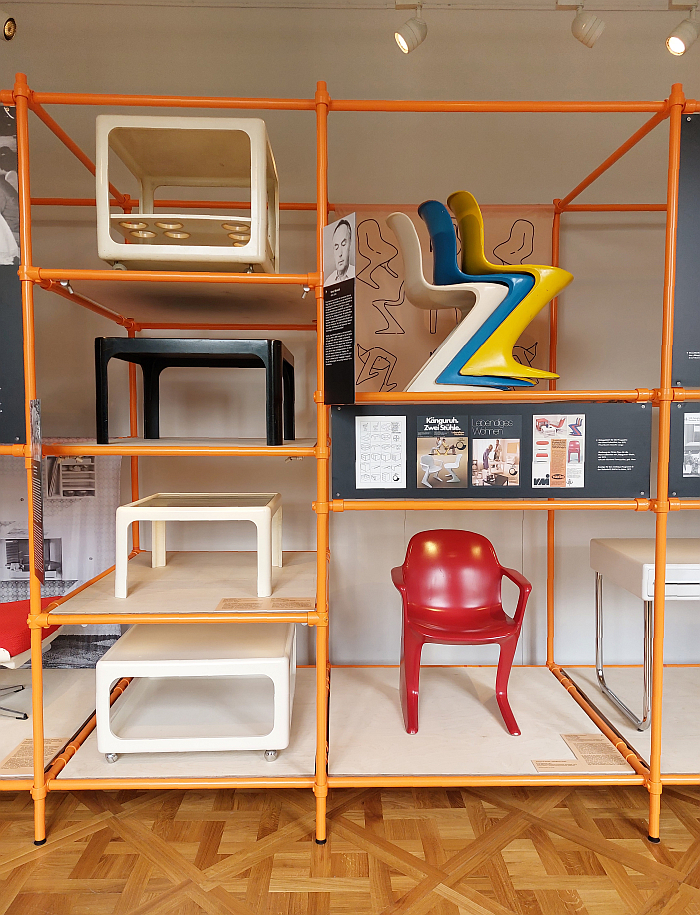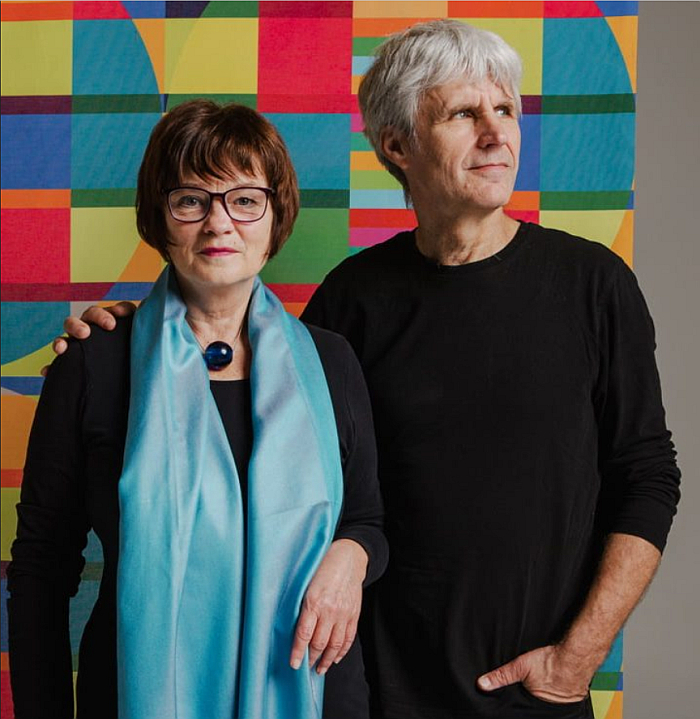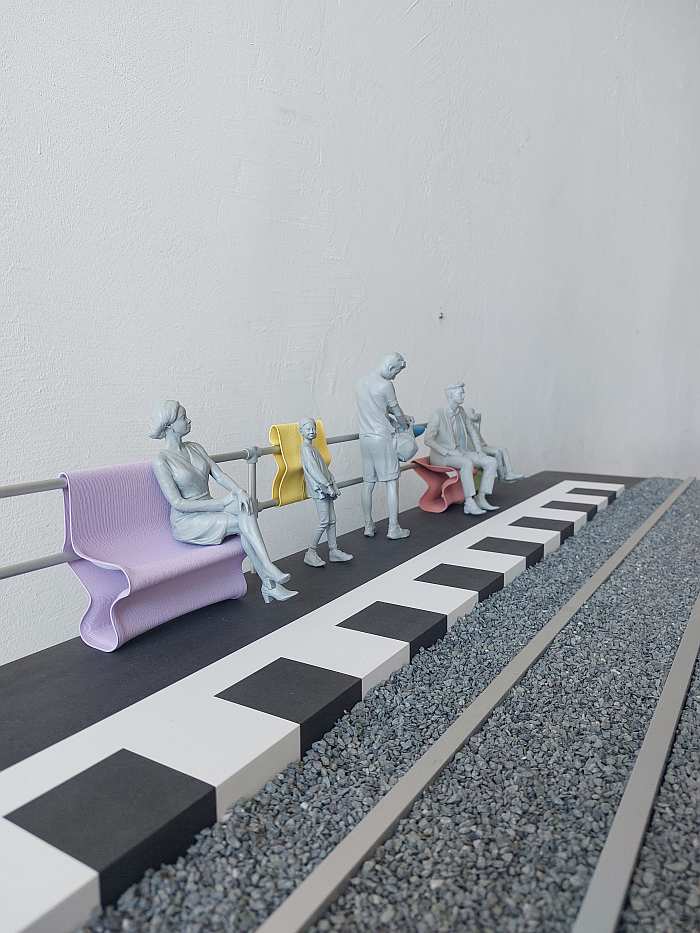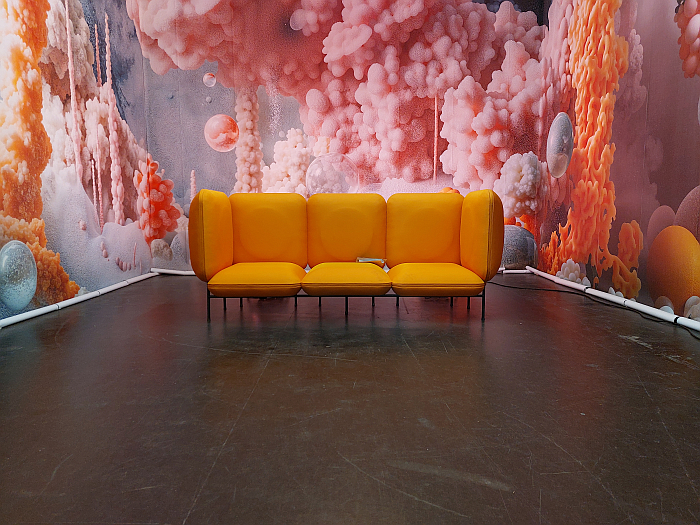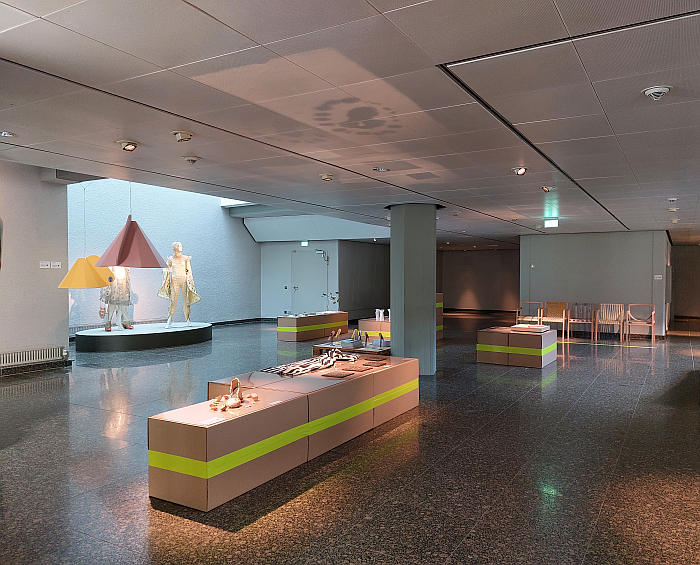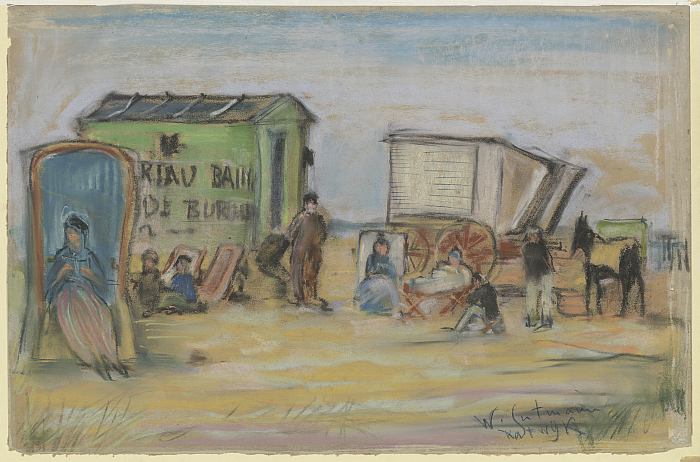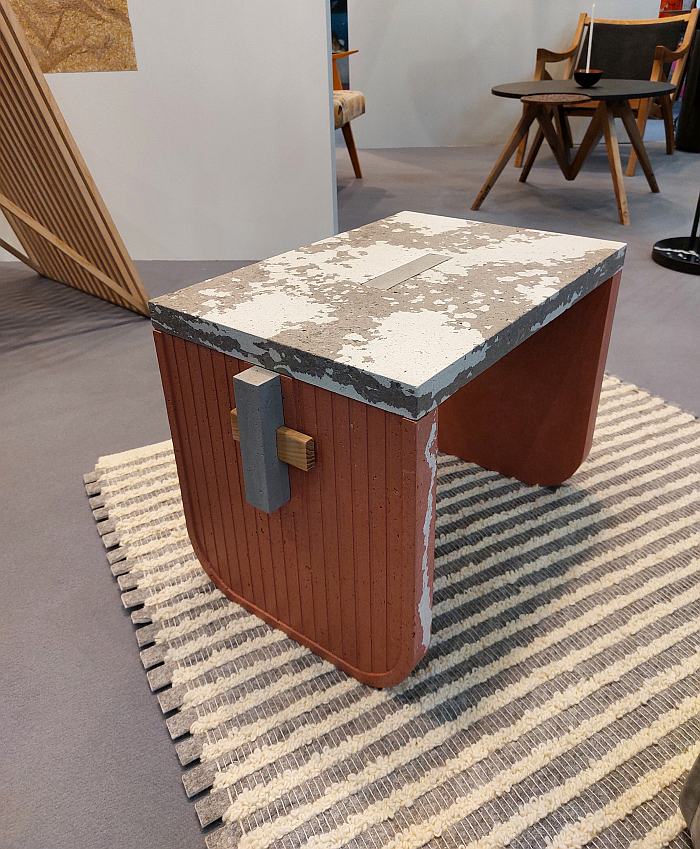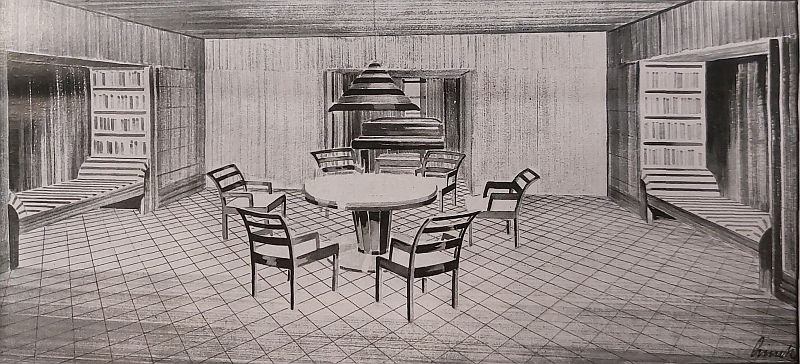Category: Designer
Lucia Moholy: Exposures at Kunsthalle Praha
“The word ‘document’ which in the last few generations stood, and in many regards still stands for, papers relating to legal matters, such as deeds, contracts, affidavits and certificates, has in present-day professional usage reverted to its original meaning as derived from its Latin origin”, opined Lucia Moholy in 1948, “and now applies to spoken, written, printed and other materials, produced and distributed for the purpose of imparting knowledge”.1
With Lucia Moholy: Exposures Kunsthalle Praha allow one to approach a better understanding that for Lucia Moholy the most important “other material” of documentation was photography, and employs Lucia Moholy’s photography, and her spoken, written and printed material, to enable an imparting of enhanced knowledge of Lucia Moholy and on the (hi)story of 20th century creativity…….
Re:Generation. Climate change in a natural World Heritage Site – and what we can do about it at Park Sanssouci, Potsdam
As an (apparent) unending forest criss-crossed by visual axes and dotted with meadows, Park Sanssouci in Potsdam stands proxy for the garden design, the garden architecture, of 18th and 19th century Europe.
As an (apparent) unending forest criss-crossed by visual axes and dotted with meadows, Park Sanssouci in Potsdam stands proxy for the power and wealth and pomp and glory of 18th and 19th century Prussia.
According to the Stiftung Preußische Schlösser und Gärten Berlin-Brandenburg, who today are responsible for maintaining and managing Park Sanssouci, some 80% of Park Sanssouci’s trees are damaged, ill.
As an (apparent) unending forest criss-crossed by visual axes and dotted with meadows, Park Sanssouci in Potsdam stands proxy for the consequences and effects of climate change.
A reality employed in Re:Generation to, as the full title helpfully explains, discuss those effects – and the what we can do about it…….
The Historia Supellexalis: “W” for Wegneritis
Wegneritis
An Itch; A Compulsion; A Just One Good Chair
5 New Architecture & Design Exhibitions for July 2024
As Sara Coleridge so very, very, nearly phrased it:
“Hot July brings cooling showers,
Apricots, and inspiring days in architecture and design museums”1
Our five apricots recommendations for inspiring new exhibitions opening in the, invariably, far, far, too hot July of 2024 take us all to Luxembourg, Remagen, Warsaw, Utrecht and Susch…….
Nils Holger Moormann presents Salone di Aschau 2024
Ciao Salone!
Servus Salone!!
Amongst the European designer furniture publishers Nils Holger Moormann has long stood out from the crowd, and that primarily because Nils Holger Moormann has never sought the crowd, has always done Nils Holger Moormann’s thing, not the crowd’s thing, and who in doing such has very much, and very justifiably, attracted a crowd lot of individuals.
Thus while other furniture publishers dance to the tune of the international trade fair crowd, Nils Holger Moormann organise their own trade fair.
Ciao Milano!
Servus Aschau!!
Design Without Borders 2024, Saluton!
Celebrating its 20th anniversary edition in 2024 we charted, and discussed, the (hi)story of Design Without Borders in our conversation with the institutions initiators, organisers and curators Szilvia Szigeti and Tamás Radnóti, and so refer you there dear readers for the background. And also refer you to our post from the 2014 edition, the last time we visited Design Without Borders in its native Budapest; a last visit in Budapest not for lack on interest, far from it, but simply on account of pressures of time.
In 2024 we did however manage to make it timeously to the Hungarian capital, and up the hill to the Kiscell Museum, Design Without Borders’ home since 2020, and over the coming days and weeks we will bring you some of our thoughts and reflections on some of those works and projects and positions experienced. Here we will quickly note, and as previously intimated, aside from the usual presentation of works by international designers invited by Szilvia and Tamás, and works by students of international design schools that have become a regular feature, Design Without Borders 2024 opens, if one so will, with a brief retrospective of the past 20 years, including textile designs by Szilvia and a desk by Tamás, the latter a work originally shown at the 1996 exhibition BútoroSOKK – FurnitureSHOCK – at the Budapest Museum of Applied Arts, an exhibition curated by Tamás and which judging by the photo on display in the Kiscell Museum must have been a real SOKK in in late 1990s Budapest, and ends with a retrospective of the last decade of Texhibition, or at least ends with a large part of the Texhibition retrospective, elements are woven, pun very much intended, throughout the main display; a Texhibition platform organised by Szilvia which pairs textile designers with Hungarian textile manufacturers to realise a project with the overall aim of supporting and promoting textile design and the textile design industry in Hungary.
Sandwiched, if one so will, between the two retrospectives one finds not only the main Design Without Borders 2024 exhibition but also a presentation of projects from Spot On MozART, an interdisciplinary project undertaken between 2020 and 2023 by the Mozarteum, Salzburg, a presentation including results from a weaving project which links immaterial sound with tangible goods, a nice reminder that aesthetics isn’t just a visual concept; and which leads into a brief presentation of the (hi)story of the complex that houses the contemporary Kiscell Museum exploring not only the links between Kiscell and Mariazell, Austria, links that go back to the establishing of the Kiscell complex, the original name for Kiscell being Kismáriacell, Little Mariazell, because that’s exactly what it was built as, a small-scale copy of the church at Mariazell, but also discussing the life and work of the interior designer and furniture manufacturer Miska Schmidt who called the Kiscell complex home from 1910 until his death in 1935, when, following Schmidt’s bequeathing of the complex to the city, it became a museum of local (hi)story.
A presentation of the (hi)story of the Kiscell complex that, more or less, ends with a 1930s display vitrine from the, then, new museum. A vitrine that finds a formal echo in the 1996 desk by Tamás met at the start of Design Without Borders 2024. Albeit an echo with a different origin: the vitrine tapering towards its rear edge as it had to fit in the window space, and they taper towards the window; Tamás’s desk tapering because it is a reflection on desks, on the use of desks and a response to that way we all tend to use not the whole desk surface just an arc around us, and so don’t need the whole desk surface. So why provide the whole? A comparison that is a very nice reminder that in design a form is rarely a form and invariably is an expression of a position or a response to a questioning or a solution to a challenge. And a reminder that similar objects can and do arise in different epochs and from different approaches and from different positions, because a designer never works towards a form but towards a solution, an expression, an argument, a response, an object.
Reminders regularly repeated throughout Design Without Borders 2024, and that in a presentation which in its crossing borders, its ignoring borders, of genre, position, epoch, approach etc, allows for a questioning of what is ‘design’ if we don’t create borders between different creative practices? How does one define ‘design’ if there are no borders? How does one define ‘Europe’ if there are no borders? How does one define ‘the world’ if there are no borders? How do borders restrict and harm ‘design’? Questions that couldn’t be more relevant for design, or for the society that depends on the ongoing development of design and from which design develops.
For all in or near Budapest Design Without Borders 2024 can be viewed at the Kiscell Museum, Kiscelli utca 108, 1037 Budapest until Sunday June 23rd.
For all in on near Bratislava an abridged presentation can be viewed at Galéria Umelka, Dostojevského rad 4533/2, 811 09 Bratislava from Saturday July 13th until Saturday August 10th. A version that for all it is abridged we see no reason to doubt will be any less informative, interesting or entertaining than that on show in Budapest.
And for all, more details on Design Without Borders and the 2024 edition can be found at https://design-without-borders.eu
Munich Creative Business Week 2024 Compact: The Biophilic Workspace at the Technische Universität München
Bauhaus and National Socialism at Klassik Stiftung Weimar
From the Bauhaus Museum Weimar you can see the Buchenwald concentration camp; from the Bauhaus Museum Weimar you can exactly locate the violence and inhumanity of the NSDAP.
However from Bauhaus Weimar and Bauhaus Dessau and Bauhaus Berlin locating the NSDAP is a lot less straightforward; from the Bauhauses seeing the NSDAP is not as simple, the view towards the NSDAP being as it is partially hidden, lightly distorted, unfocussed, by the mists of an unquestioned post-War narrative. And that despite, or perhaps exactly because of, the various and varied links between the Bauhauses and the NSDAP.
With the exhibition programme Bauhaus and National Socialism the Klassik Stiftung Weimar enable a much clearer view on not just the NSDAP from the perspective of the Bauhauses, but also allow for more nuanced reflections on a still astoundingly relevant, if often incompletely discussed, chapter in European (hi)story…….
A Chair and You at the Grassi Museum für Angewandte Kunst, Leipzig
In 1949 Edgar Kaufmann Jr. the, then, Director of the Industrial Design Department at the Museum of Modern Art, New York, reflected, not uncritically, that “as more and more new chairs become available to the buying public, the problem of selection begins to be bewildering.” A truism that has lost nothing in contemporaneousness over the decades; and also a very nice eyewitness observation from the early days of the rise of the post 1939-45 War American furniture design industry. And of its associated, parasitic, mimics.
“Is it true”, Kaufmann asks, in context of his reflections, “that our needs are so varied?”1
Just one of a great many questions of chairs, seats, sitting and sitters A Chair and You at the Grassi Museum für Angewandte Kunst, Leipzig, encourages, empowers, you to reflect upon…….
Munich Creative Business Week 2024 Compact: Earth Centered Design. An Exhibition at the Hochschule München
PURe Visions. Plastic Furniture Between East and West at the Kunstgewerbemuseum, Dresden
For all that steel tubing is the popular personification of the rise of the novel in furniture and interior design in context of the developing industrialisation of the first third of the 20th century, that primary representative of the rise of the machine and its victory over craft, in many regards the real symbol of the progress of the period was the novel synthetic plastics being developed, Bakelite being inarguably the best known and most widely employed.
Yet while in the 1920s and 30s the likes of a Christian Dell developed interesting, instructive, objects from novel plastics, ably demonstrated the possibilities of the novel materials contemporary chemistry was bringing forth, their use in objects of daily use remained limited, not least on account of problems of structural stability and durability; limited, save, arguably, and unfortunately, Bakelite’s use in the construction of Walter Maria Kersting’s Volksempfänger radio, that piece of contemporary design the NSDAP used so efficiently and so knowledgeably to transport their nefarious agenda and toxic propaganda into every home. Yes, there is a lesson to be learned there.
The 1930s however also saw the first patents for a novel synthetic plastic that would not only demonstrate the possibilities of the novel materials, but which had the characteristics to enable it to make those possibilities realities: polyurethane
A material that, it’s fair to say, on its commercial introduction in the 1960s, revolutionised not only furniture design but furniture production as fundamentally as a Michael Thonet once had with his adaptation of the dark art of woodbending. While the colour polyurethane enabled brought a vitality and freshness and exuberance that, it’s equally fair to say, revolutionised interiors. Allowed 1960s and 70s interiors to Pop.
And while today polyurethanes are more critically analysed than they once were, their use is rightly questioned today, as is the proposition of alternatives actively considered, the developments of the 1960s and 70s, the positions that were advanced in that period and the understandings of furniture that arose in that period remain.
If often popularly only very poorly, superficially, understood.
As is the (hi)story of furniture and interior design in the two Germanys of the 1960s and 70s.
As are the intersections of the political, economic, social (hi)stories of the two Germanys of the 1960s and 70s.
With PURe Visions. Plastic Furniture Between East and West the Kunstgewerbemuseum Dresden go deep into the (hi)story of polyurethane furniture in the two Germanys of the 1960s and 70s and thereby also allow one to approach better appreciations of the (hi)story of furniture and interior design in the two Germanys, and of the wider (hi)story of the two Germanys……
20 Years of Design Without Borders: “The human connections are the most important”
Given that ‘design’ is popularly associated with a limitless reality, an unrestrainable questioning, a pushing at the open doors of possibility, it does tend to get hemmed in quite a lot, we do tend to like place it within an awful lot of borders: geographic borders, category borders, practice borders, conceptual borders, historic borders, etc, etc, etc.
Or at least most of us do. For the past 20 years Budapest has been home to a borderless design, to Design Without Borders, an institution that has grown from a four day showcase featuring a handful of local protagonists to a six week exhibition programme presenting the work of some 200 international creatives, alongside concerts and film screenings.
Ahead of its 20th edition we met up with Szilvia Szigeti and Tamás Radnóti, instigators and curators of Design Without Borders, to discuss the past, present, future. And the hows, whos, whys……
Berlin Design Week 2024 Compact: Morari by Jesse Altmann, Valentina Lenk and Klara Schneider
5 New Architecture & Design Exhibitions for May 2024
As all around, certainly all around here in Europe, the world blossoms and blooms into life, as colour and variety and vitality abound, it’s strange to remember that just a few short weeks ago everything was so barren, monochrome, desolate.
Not least in context of the global architecture and design museum community: how hard we had to labour to achieve anything approaching what could justifiably be termed a ‘list’ of new architecture and design exhibitions.
Similarly it’s hard to imagine that in a few short weeks we will once again be in a position of scrubbing around looking for new exhibitions worthy of mention.
But spring and early summer are months of abundance, months where new exhibitions are waiting to be harvested, months to take advantage of while the going is good. We could have published two lists for May 2024, decided however to stay with the one; would however very much encourage you all to visit, at least, two lists worth. If not more. Get your fill while you can.
Our 6 recommendations for new exhibitions opening in May 2024, our starting points for May 2024, take us all to Berlin, Prague, Jyväskylä, Milan, Brussels and Weimar…….

